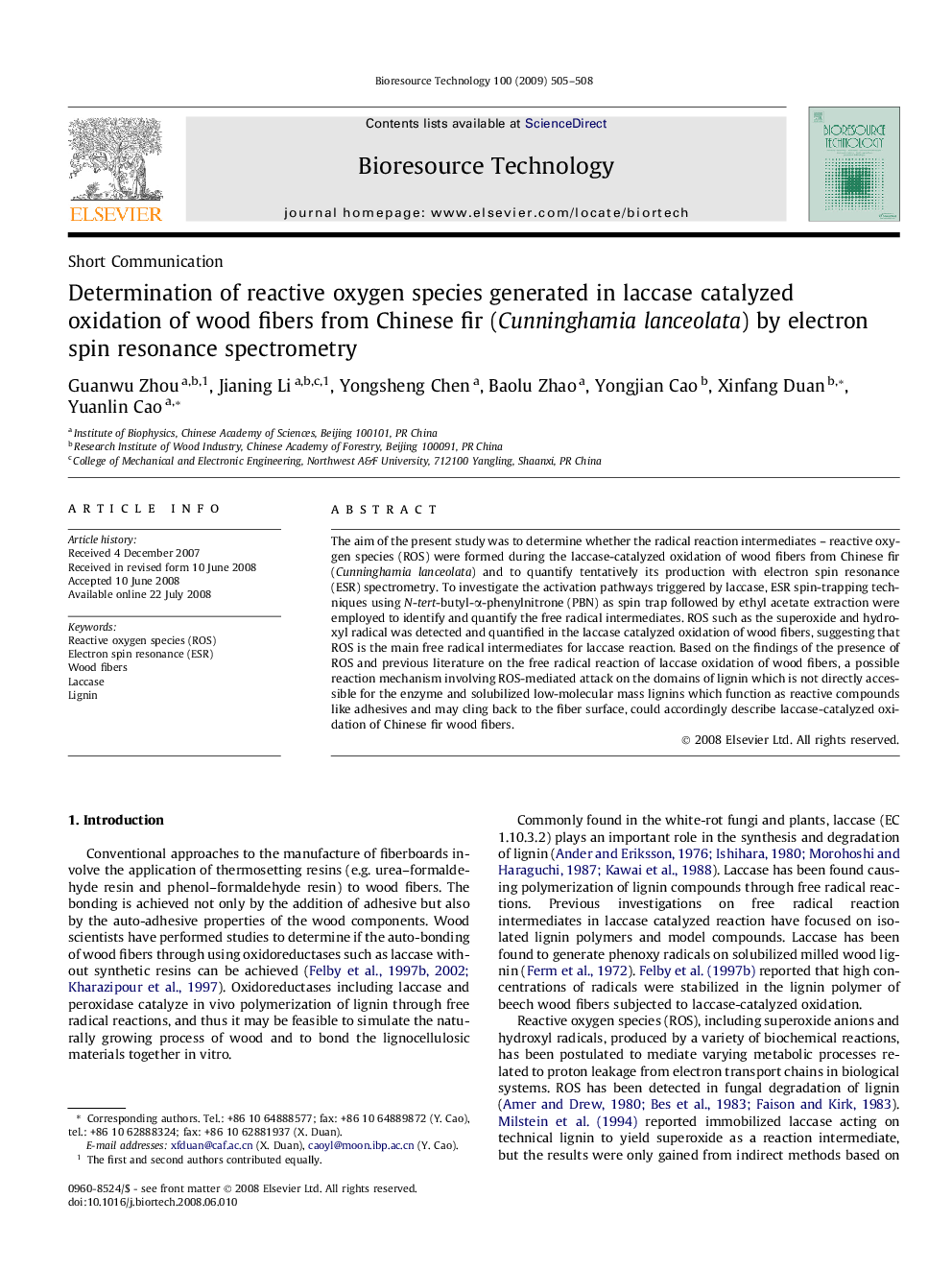| Article ID | Journal | Published Year | Pages | File Type |
|---|---|---|---|---|
| 684295 | Bioresource Technology | 2009 | 4 Pages |
Abstract
The aim of the present study was to determine whether the radical reaction intermediates - reactive oxygen species (ROS) were formed during the laccase-catalyzed oxidation of wood fibers from Chinese fir (Cunninghamia lanceolata) and to quantify tentatively its production with electron spin resonance (ESR) spectrometry. To investigate the activation pathways triggered by laccase, ESR spin-trapping techniques using N-tert-butyl-α-phenylnitrone (PBN) as spin trap followed by ethyl acetate extraction were employed to identify and quantify the free radical intermediates. ROS such as the superoxide and hydroxyl radical was detected and quantified in the laccase catalyzed oxidation of wood fibers, suggesting that ROS is the main free radical intermediates for laccase reaction. Based on the findings of the presence of ROS and previous literature on the free radical reaction of laccase oxidation of wood fibers, a possible reaction mechanism involving ROS-mediated attack on the domains of lignin which is not directly accessible for the enzyme and solubilized low-molecular mass lignins which function as reactive compounds like adhesives and may cling back to the fiber surface, could accordingly describe laccase-catalyzed oxidation of Chinese fir wood fibers.
Related Topics
Physical Sciences and Engineering
Chemical Engineering
Process Chemistry and Technology
Authors
Guanwu Zhou, Jianing Li, Yongsheng Chen, Baolu Zhao, Yongjian Cao, Xinfang Duan, Yuanlin Cao,
